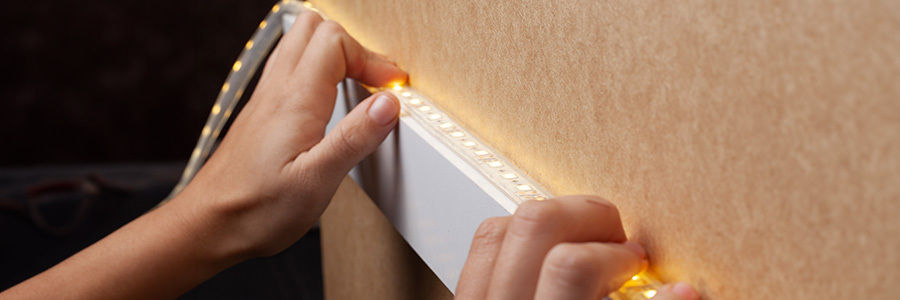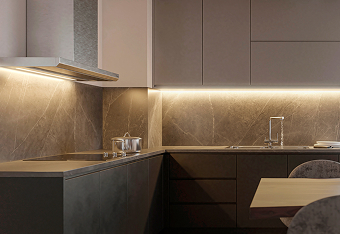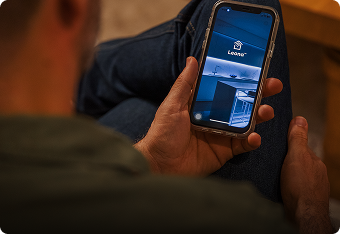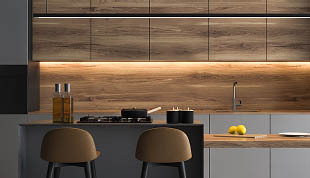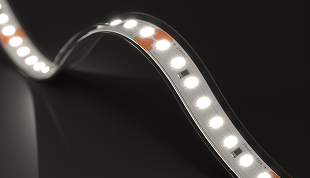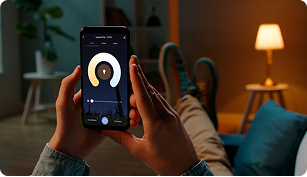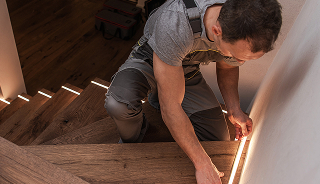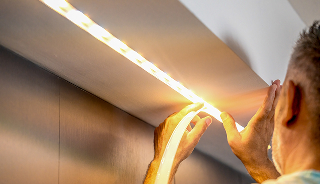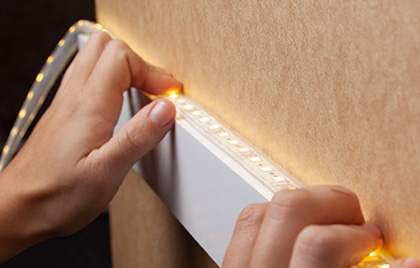Weekend Ideas: DIY LED Light Strip Projects in Just Two Days
Installing LED strip lights can be one of the best weekend plans. Try these DIY LED light projects and renew your home in two days or less!
Weekends are the perfect time to slow down. After long days of work, keeping the house in order, taking care of the kids, or being away from home, many of us want the comfort of our beds and a chance to sleep in. Especially on long weekends like Memorial Day or Labor Day!
But some of us, no matter how many days off we get, just can't stop moving. We like having things to do—especially if there's something broken to fix or a project that could make life easier and happier for our families.
Lighting didn't always fit into that kind of weekend activity. We used to think of it as something slow and complicated, needing careful planning, specialized tools, and the help of expert electricians and interior designers.
And while more challenging jobs like outdoor spaces or showers still call for the pros, things have changed. Today, home lighting is much more friendly to your time, space, and skills.
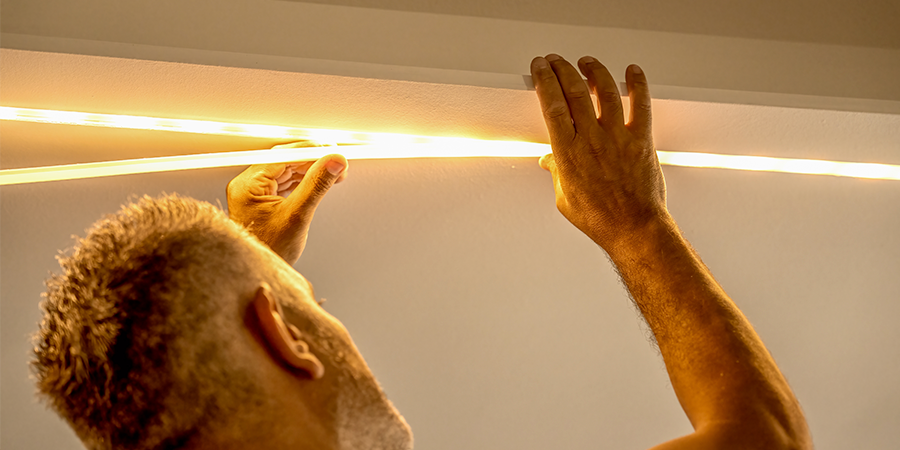
LED strip lights and other easy-to-install lighting products were made for us, who like to take the bull by the horns. With them, upgrading home lighting can be just another weekend plan, finished in two or three days at most without extra hassle.
In this article, we'll show you why strip lighting is perfect for helping you get the results you've always wanted in a single weekend. We'll also share a few project ideas that take just hours to finish, but give you light that lasts for years and weekends to come.
DIY LED Strip Lights: The Top Weekend Pick for Saving Time and Effort
Since we have more time and are less busy, our eyes spot any problems at home more easily on weekends. Whether a halogen kitchen light bar has stopped working or one of the bulbs in the living room is out, we check it right away.
At the same time, weekends let our imagination run wild when we think about changes in our space or remodeling ideas. Wouldn't this lamp look better if I moved it? What if my gaming zone didn't just glow white but in many colors to make my game time more fun? We often end up scrolling Pinterest or looking at spaces to draw inspiration and spark new ideas.
If a free weekend is coming and you need to replace a light or start a fresh, creative installation that brings new life to your spaces, LED strip lights are your best friend for these DIY lighting projects.
Their size lets you fit them even in little nooks or openings, usually hidden spots where regular bulbs just won't fit. There are even versions with super small LEDs for extra-tight spaces. This is great if you want to light a mirror from behind, but it doesn't have a wide frame, or if you want to add lights under narrow furniture.
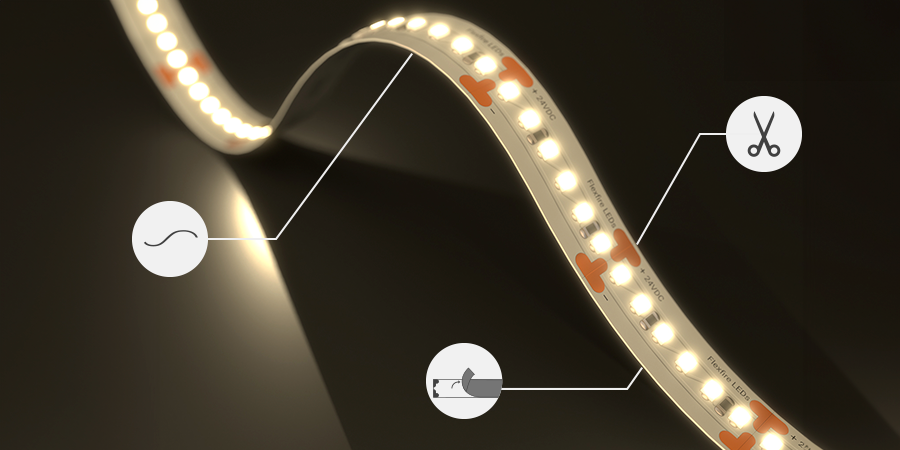
LED strips also have adhesive backing that lets you attach them to almost any clean, smooth surface inside your home. Plaster on the ceiling, wood or particleboard shelves and cabinets, kitchen wall tiles, aluminum or plastic on the back of a computer… You name it. As long as it’s even, flat, and stable, the strips will stick to it.
You can also cut them easily with regular scissors, such as the ones in your toolbox or kitchen drawer. Besides being flexible, this means the lights fit your space—not the other way around. So it doesn't matter if your shelf ends are round or square, or if the furniture is big or small!
What About Lighting Accessories?
Some may wonder about everything that goes with an LED strip light to make it work. The power supply that gives it electricity, the controller that lets us control the lights from the device we want, and so on. Can you really get all that and make it work in such a short time?
Well, this all comes down to connections: how we join our LED strips to each other or to the different parts we'll use in our weekend projects. Safe, tight, and careful connections are the key to any successful project and shouldn't be rushed.
People who know how to solder take more time and connect everything with skill using a specialized soldering iron. However, for DIY projects like weekend installations, there's a just-as-reliable alternative that only requires pliers and steady hands.
These are called solderless grip connectors: small parts with special hooks that pierce the solder points on LED strips, allowing electricity to flow correctly. They're easy to use and don't take long.
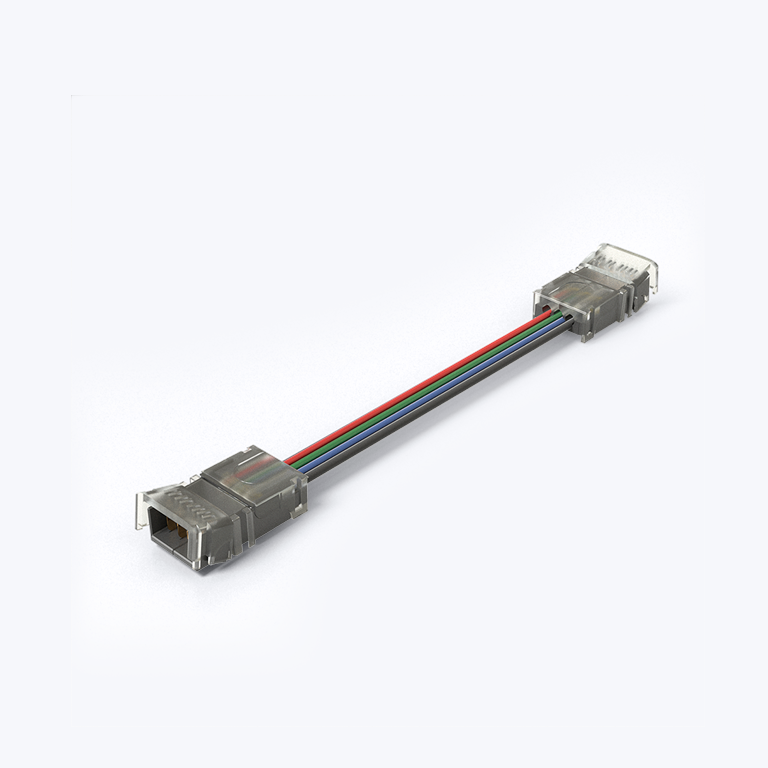
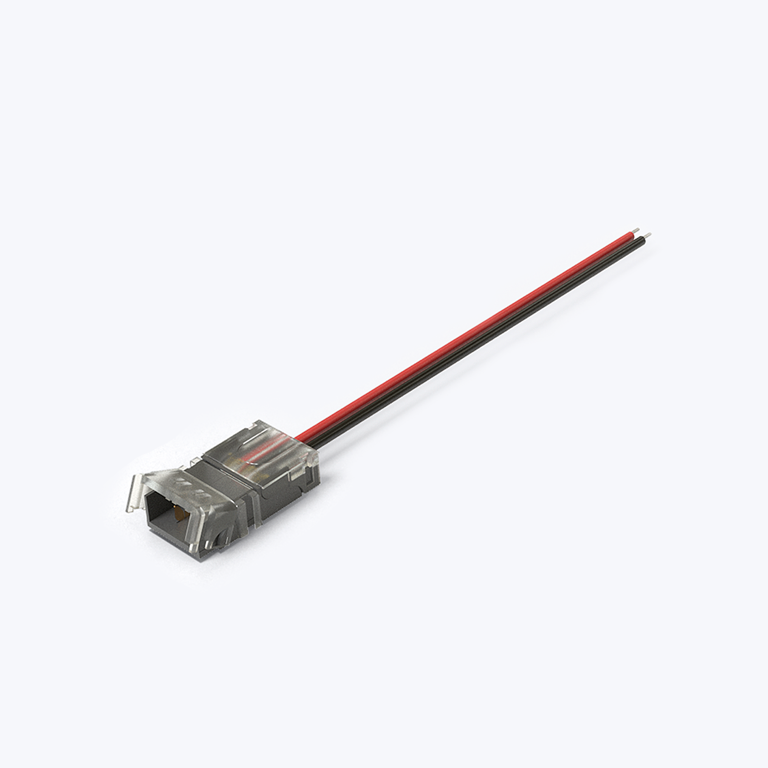
Additionally, if you're concerned about selecting the right parts for your lights or about the time it takes to install them, Flexfire offers two great options to make assembling your project as enjoyable and smooth as a great weekend.
You can always start with our Project Builder—a tool made just for DIY lovers like you. It guides you through selecting the right parts with easy questions about what you want for your space so that you can shop quickly. Saving time buying means saving time installing.
Meanwhile, we offer ready-made, all-in-one kits sorted by light color so that from the moment you buy, your install is easier with everything you need included. Just receive it, place it, plug it, and enjoy your space!
Either of these helps make your weekend project easy to do. Next, we'll explore some specific indoor projects—ones that are easy to set up and access at home, conceal your parts well, and have straightforward steps and goals—that you can complete in just two or three days.
Easy LED Light Projects: Weekend Ideas for Adults
For us to say a home lighting project is achievable in a weekend, it needs to meet a few basic requirements:
- It's indoor lighting: Outdoor lighting requires more skill and planning, as well as specialized products, due to the effects of water and weather. The same applies to splash-zone areas, such as bathrooms and kitchens.
- It's a simple layout: If you need to light an extra-large area, which would require parallel installs or multiple power supplies, or if the surface where you'll place your lights has shapes that need lots of custom cuts or special tools to cut aluminum channels (like a miter saw), that's beyond a weekend project.
- It doesn't require complex connections to existing lighting or hardwired circuits: For this, it's always best to call a licensed electrician.
- It's not a more advanced product like digital pixel LED strips: These require more complex control methods (such as DMX or DALI systems) and programming to unlock all their effects.
Also, to make sure your weekend LED project is a success, you'll need time to focus and work, basic tools like scissors and pliers, a clean and clear workspace, and—most importantly—a precise lighting vision that takes into account both your goal with the lights and the space you're lighting.
With these elements in place, you can complete one of these beautiful, modern LED strip projects in just a weekend:
Backlight on TV
The rear panel of your TV or computer monitor is flat and easy to work with when it comes to lighting. Many people are surprised by how a seemingly simple part, one that you usually don't pay attention to, can make watching movies or playing video games so much more enjoyable.
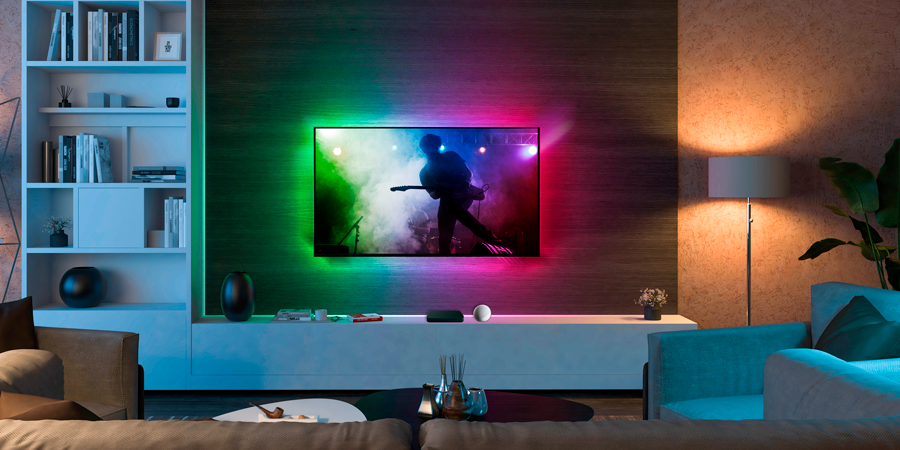
It’s proven that backlighting the TV is good for your eyes. It reduces the strain you feel when watching a bright screen in a dark room. It can also add pretty, decorative colors or lights that change to match what's on screen, making shows and music videos feel more real.
This is an easy weekend project. The back of the TV is a perfect spot to hide your lights' power supply and other installation components. Its size and straight edges make it easy to measure how much light you'll need and cut the strips, and the surface works well with their adhesive backing.
There are also ready-to-go RGB light kits that come pre-assembled and made just for TVs. Some can sync with your content or respond to sound, even adding fun effects.
Entertainment Center with Lights
Once you realize you can light up your TV, you might notice that the entertainment center it sits on has lots of little shelves and cubby holes: perfect places to hide lighting parts.
These cabinets are usually straight-lined, or sometimes gently curved without sharp angles. This makes it easy to cut the LED strips to size and place them neatly.
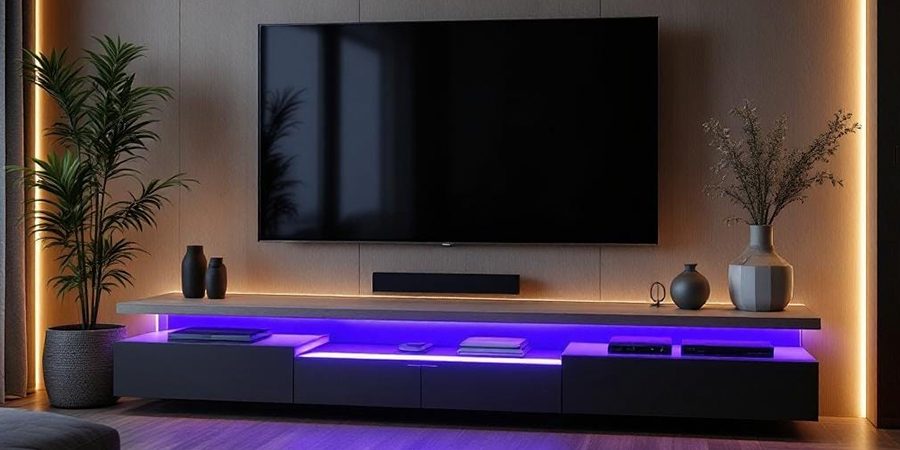
There are endless weekend project ideas for your entertainment center. You can line the bottom to make it look like it's floating. You can outline each cubby to light up your movie collection, action figures, or memorabilia. You could even light the front or back of a shelf full of horror novels for extra drama.
For this, we recommend an RGB, color-changing LED kit. All you need to do is measure, cut, connect, and done! You'll find the same kinds of nooks and crannies in many pieces of furniture, so you can try similar lighting in other rooms too.
Under-Bed Lighting
Speaking of furniture, there's one piece in almost every home that's perfect for installing and hiding LED strips: the bed. Adding lights here can give your room a modern look and even help your daily comfort.
The rails under the mattress are perfect for attaching long runs of LED strips, whether the bed is made of solid or engineered wood, metal, or mixed materials. The rectangular frame makes it quick and easy to run the strips evenly without tricky cuts.
Completing an under-bed lighting project over a weekend provides gentle nighttime lighting that makes it easier to navigate to the bathroom or kitchen without fully waking yourself up, while also creating a floating effect similar to that found in luxury hotels or sci-fi spaceships.
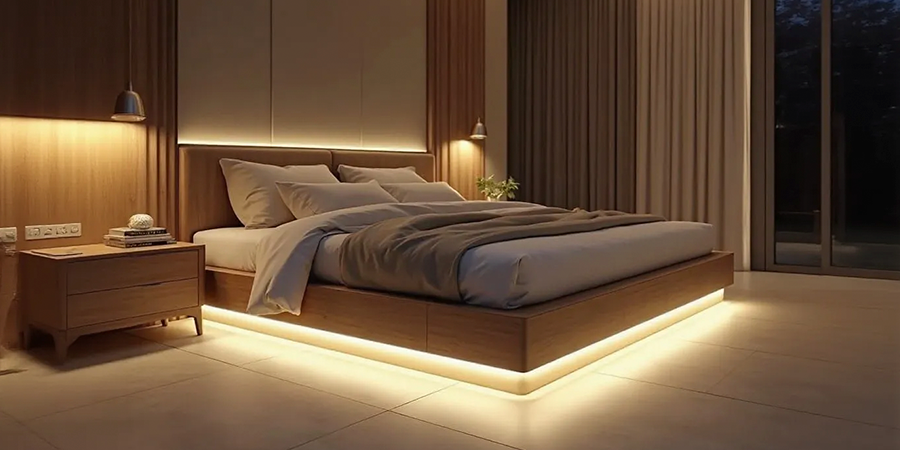
A DIY kit with tunable white lights can be set to match your body's natural sleep cycle by mimicking sunlight, helping you keep a healthy rhythm. Another great choice is a dim-to-warm LED kit with extra-warm light for rest before sleep.
If you love the effect under the bed, you can also try headboard lighting. This works much the same way—you can light just the top, or the top plus the sides and bottom to outline the whole headboard.
Mirrors with Backlighting
Just like the back of a bed or TV, mirrors often have a flat surface and a frame edge where you can stick LED strips.
Outlining a mirror in your entryway, bedroom, or closet can help you see your outfit or face more clearly, reduce eye strain, and make the room feel bigger. It also lets you skip turning on the main lights when you just want to check something quickly.
If your mirror is square or rectangular, you can cut the LED strip into four pieces and attach them to each side. If it's round, you don't have to go all the way around—a few straight sections along the edge can still give you an even glow.
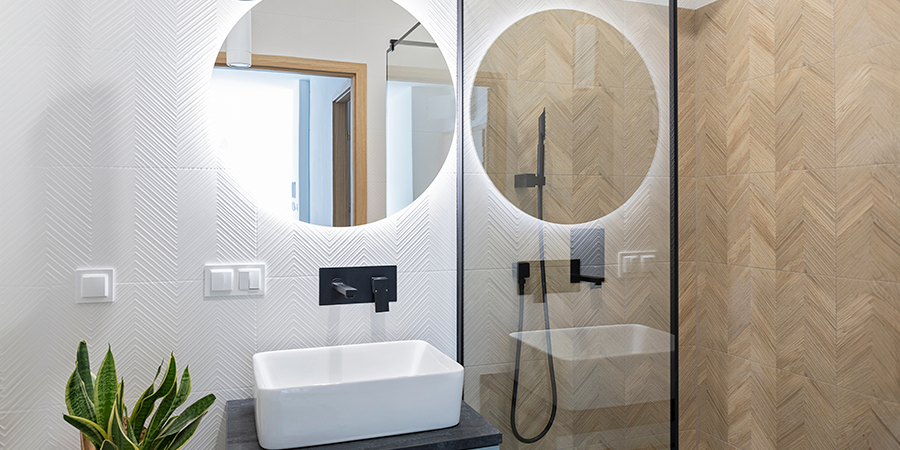
For mirrors, a pre-made lighting kit with soft, elegant white light is best. You don't want the light too strong. Good-quality LEDs with a high CRI will show you the true, accurate colors you need for prepping an outfit, and the installation is quick and easy.
Closet Lights
Every closet should have good lighting. It's where we get dressed and choose our clothes for the day, so we need to see colors clearly. It's also where we keep lots of small items, from socks to rings and earrings, that can easily get lost.
What's more, most closets have built-in nooks that seem made for lighting placements. Cubby holes, shelves, hanging rods, shoe racks, drawers, cabinets—the list goes on, especially in walk-in closets.
Because closets come in all shapes and sizes, you need a flexible lighting solution. While LED strips work great for this, our number-one pick for closets is tunable white LED light bars. You can link them together, adjust the shade of the light, and add a hand-motion sensor so you can grab clothes easily without fiddling with switches.
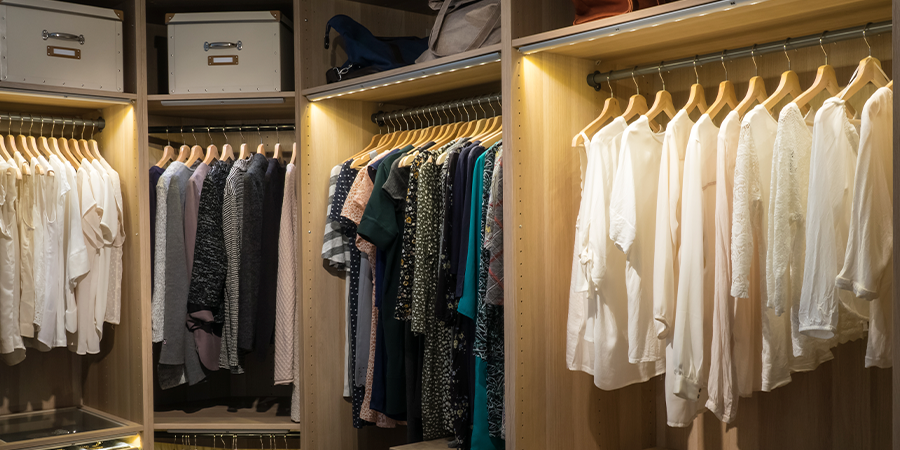
The size and complexity of your closet will decide how big the project is and how long it takes. But because closets are small spaces, the job usually won't take more than a weekend, whether you choose strips or bars.
Under-Cabinet Lighting in All Spaces
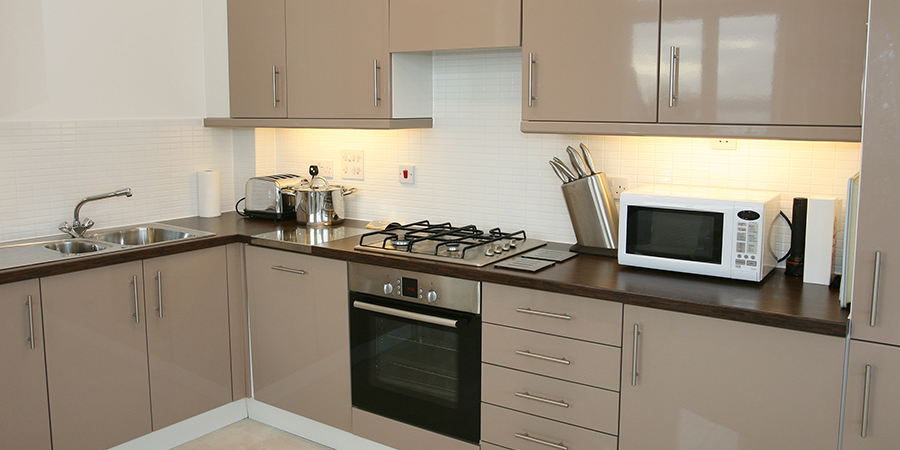
Finally, there's one more lighting idea that works great with either LED bars or strips: under-cabinet lighting. This is perfect for the kitchen, a garage workshop, a home-office desk, or any place where you have cabinets above a work surface.
These spots—where you type on a keyboard, chop vegetables, or fix a broken radio—need bright, focused light. Placing it right under the cabinet shines it exactly where you work, making it easier and safer while keeping your eyes comfortable.
Since most cabinets are made of standard materials like wood, plastic, or sometimes metal, sticking on LED strips is easy. And you can hide the wiring and other parts inside or on top of the cabinets.
All in all, under-cabinet lighting is a simple weekend project that makes a big difference in how you work and enjoy your space.
With Flexfire, Weekend LED Strip Installations Are Easy
Even with all this in mind—and even if you have the most DIY-friendly LED products, a clear plan for your space, and one of the spots we mentioned—it’s still impossible to pull off a weekend installation without a trusted team behind you.
A quality brand doesn’t just give you peace of mind and answers when picking the right products. It is backed by the know-how from hundreds of space transformations and DIYers who have upgraded their homes with ease.
Reach out and let’s talk about your next weekend project. With Flexfire, it’ll be so easy, it will feel like you’re just taking a well-deserved weekend break.
